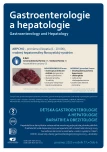Pharmacological characteristics of subcutaneously administered monoclonal antibodies
Authors:
K. Urbánek
Authors‘ workplace:
Ústav farmakologie LF UP a FN Olomouc
Published in:
Gastroent Hepatol 2023; 77(6): 539-543
Category:
IBD
doi:
https://doi.org/10.48095/ccgh2023539
Overview
Subcutaneous administration is a simple method of parenteral administration with a minimum of possible complications, also suitable for home treatment. Moreover, it can be used to influence the pharmacokinetics of the administered drug. For therapeutically used monoclonal antibodies, it brings several advantages in terms of simplifying treatment and improving patient’s adherence. In addition, it appears that by targeting pharmacokinetic parameters, lower immunogenicity, and achievement of pharmacokinetic-pharmacodynamic targets can be achieved and thus, likely improve treatment outcomes.
Keywords:
monoclonal antibodies – pharmacokinetics – pharmacodynamics – subcutaneous administration
Sources
1. Breedveld FC. Therapeutic monoclonal antibodies. Lancet 2000; 355 (9205): 735–740. doi: 10.1016/s0140-6736 (00) 01034-5.
2. Keizer RJ, Huitema AD, Schellens JH et al. Clinical pharmacokinetics of therapeutic monoclonal antibodies. Clin Pharmacokinet 2010; 49 (8): 493–507. doi: 10.2165/11531280-000000000-00 000.
3. Matalová P. Vybraná biologická léčiva v neonkologických indikacích. Klin Farmakol Farm 2018; 32 (3): 19–25. doi: 10.36290/far.2018.019.
4. Viola M, Sequeira J, Seiça R et al. Subcutaneous delivery of monoclonal antibodies: How do we get there? J Control Release 2018; 286: 301–314. doi: 10.1016/j.jconrel.2018.08.001.
5. Sánchez-Félix M, Burke M, Chen HH et al. Predicting bioavailability of monoclonal antibodies after subcutaneous administration: Open innovation challenge. Adv Drug Deliv Rev. 2020; 167: 66–77. doi: 10.1016/j.addr.2020.05.009.
6. Alten R, An Y, Kim DH et al. Re-Routing Infliximab Therapy: Subcutaneous Infliximab Opens a Path Towards Greater Convenience and Clinical Benefit. Clin Drug Investig 2022; 42 (6): 477–489. doi: 10.1007/s40261-022-01162-6.
7. Verma AM, Patel A, Subramanian S et al. From intravenous to subcutaneous infliximab in patients with inflammatory bowel disease: a pandemic-driven initiative. Lancet Gastroenterol Hepatol 2021; 6 (2): 88–89. doi: 10.1016/S2468-1253 (20) 30392-7.
8. Little RD, Ward MG, Wright E et al. Therapeutic Drug Monitoring of Subcutaneous Infliximab in Inflammatory Bowel Disease-Understanding Pharmacokinetics and Exposure Response Relationships in a New Era of Subcutaneous Biologics. J Clin Med 2022; 11 (20): 6173. doi: 10.3390/jcm11206173.
9. Kim H, Alten R, Cummings F et al. Innovative approaches to biologic development on the trail of CT-P13: biosimilars, value-added medicines, and biobetters. MAbs 2021; 13 (1): 1868078. doi: 10.1080/19420862.2020.1868078.
10. Iannone F, Conti F, Cauli A et al. Subcutaneously-Administered Infliximab in the Management of Rheumatoid Arthritis: A Short Narrative Review of Current Clinical Evidence. J Inflamm Res 2022; 15: 3259–3267. doi: 10.2147/JIR.S240593.
11. Hamuro L, Kijanka G, Kinderman F et al. Perspectives on Subcutaneous Route of Administration as an Immunogenicity Risk Factor for Therapeutic Proteins. J Pharm Sci 2017; 106 (10): 2946–2954. doi: 10.1016/j.xphs.2017.05.030.
12. Jarvi NL, Balu-Iyer SV. Immunogenicity Challenges Associated with Subcutaneous Delivery of Therapeutic Proteins. BioDrugs 2021; 35 (2): 125–146.
13. Smith PJ, Fumery M, Leong RW et al. Real-world experience with subcutaneous infliximab: broadening treatment strategies for inflammatory bowel disease. Expert Rev Clin Immunol 2023; 19 (9): 1143–1156. doi: 10.1080/1744666X.2023.2231148.
14. Janeway CA Jr, Travers P, Walport M et al. Immunobiology: The Immune System in Health and Disease. 5th edition. New York: Garland Science 2001. Dostupné z: https: //www.ncbi.nlm.nih.gov/books/NBK10757/.
15. Usach I, Martinez R, Festini T et al. Subcutaneous Injection of Drugs: Literature Review of Factors Influencing Pain Sensation at the Injection Site. Adv Ther 2019; 36 (11): 2986–2996. doi: 10.1007/s12325-019-01101-6.
Labels
Paediatric gastroenterology Gastroenterology and hepatology SurgeryArticle was published in
Gastroenterology and Hepatology

2023 Issue 6
Most read in this issue
- Pancreatic cancer surveillance in high-risk individuals Position statement of professional societies
- Practical clinical recommendations for perioperative care in bariatric surgery 2023: adaptation of ERAS (Enhanced Recovery After Surgery) recommendations with consensual voting of working group of Joint Section of Bariatric and Metabolic Surgery of Czech Surgery Society and Czech Obesitology Society
- Hepatobiliary complications in autosomal recessive polycystic kidney disease
- Report from the 37th Slovak and Czech Congress of Gastroenterology
